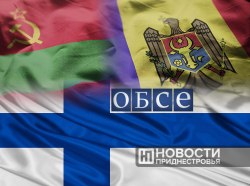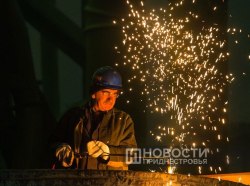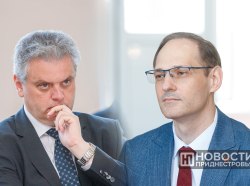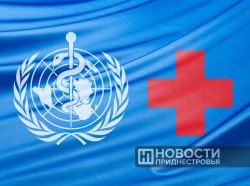The issue of resuming the use of reconstructed bridges across the Dniester, which had been damaged by the Pridnestrovian side for self-defence during the armed conflict, has been on the negotiating agenda for many years.
An agreement on security guarantees for the use of restore bridges was signed on 21 July 1998, which made it possible to put a Dubossary bridge into operation.
In the early 2000s the opening of a bridge in the vicinity of Bychok village, PMR, and Gura Bicului, Moldova, which was repaired in 2001 at the expense of Latvia's grant, was under active discussion. However, no agreement was reached in principle, including due to Moldova's reluctance to fully contribute to the restoration of Pridnestrovian motorway from funds donated by international organisations. Of course, the exclusion of the bridge issue from the negotiating agenda was caused to a certain extent by "alienation" between the parties that followed a short period of "warming" in 2001 after a series of meetings between Pridnestrovian President Igor Smirnov and his Moldovan counterpart, Vladimir Voronin, who came to power promising to join the United State of Russia and Belarus.
The issue was raised again ten years later in the context of the meetings of the Pridnestrovian and Moldovan leaders on 21 November 2011(Smirnov and Filat) and 27 January 2012 (Shevchuk and Filat) and the official resumption of "Permanent conference..." meetings. However, it was the OSCE and EU rather that traditionally focussed on the opening of the bridge as a powerful symbol of "rapprochement between the two banks of the Dniester."
A protocol on the joint technical survey of the bridge was signed in March 2012 following a meeting of expert (working) groups on transportation and road facilities.
An on-site meeting was held on 19 April 2012 to survey the bridge, following which a protocol was signed to confirm the sum of money necessary to launch traffic over the bridge and improve the traffic conditions. According to estimates, this required $80,000. In turn, the rehabilitation of the international motorway M-14, passing through both Moldova and Pridnestrovie, require substantial investment by the international partners of Moldova and Pridnestrovie since the repair of the two viaducts was estimated at up to $3 million in 2012.
The following statement was introduced in the Joint Communiqué of 20 June 2012 following a meeting of Yevegeny Shevchuk and Vladimir Filat in Rottach-Egern, Germany: "The parties agreed during the meeting to continue work aimed at resuming traffic over the bridge across the Dniester River near the villages of Bychok and Gura Bicului, which will enable the opening of an international transport corridor."
Pursuant to the leadership's mandate, a protocol was signed at a meeting of relevant expert groups on 5 July 2012 to state that "the parties have agreed to carry out priority work – restore the control seam — aimed at resuming traffic over the bridge. The parties shall jointly determine a contractor to perform the work. The parties consider it necessary to jointly develop an investment project at an amount of up to €100,000 to attract international financing."
However, as Moldova failed to grant Pridnestrovie permissive documents for international passenger transport, the signing of an agreement to open the bridge was delayed.
At a "Permanent Conference..." meeting in September 2012, Pridnestrovie clearly stated that it intended to address the issues "in one package" with the international transport problem. It is against such backdrop that the opening of the bridge was discussed during a three-day round of negotiations in Dublin in November-December 2012, where at least 15 hours was devoted to the transport issue. The OSCE produced a total of six drafts of a protocol decision sonsisting of three blocks: the opening of the bridge, the issuance of permits for Pridnestrovie to international freight and passenger transport, the removal of administrative barriers for Pridnestrovian residents at the Moldovan border (at the airport). However, the parties failed to agree only one wording in the bridge section involving guarantees to avoid using the bridge for military purposes.
Negotiations on road transport somewhat stalled in 2013 in view of Moldova's demand that all vehicles be registered, which was unacceptable for Pridnestrovie at that time. Taking into account the emphasis of Ukraine's OSCE Chairmanship on other topics, the bridge issue was not actually discussed at the level of expert groups or the "5+2" format until October 2013. During a one-day meeting of the "Permanent Conference..." in Brussels, the parties sought, at the request of mediators, to agree on a joint appeal to donors to finance the repair of the bridge and access roads but did not reach an agreement. The parties did not agree on what was meant by the phrase "early opening", on which Moldova insisted.
As a result, only two issues from the original package were partially resolved: Pridnestrovie received permits to passenger transport only; Moldova undertook to cancel administrative persecution of Pridnestrovian residents at the airport. The corresponding agreement was reached in November 2013 in Kiev and confirmed by Eugen Carpov's official letter, but it was set down only in February 2014 as part of the Protocol Decision "On some aspects of free movement". Paragraph 1 of the document states that the parties agreed "to act in order to achieve the free movement of people along international transport corridors, including reaffirming the priority of opening the bridge across the Dniester near the villages of Gura Bicului and Bychok."
However, the significant degradation of the atmosphere in the dialogue associated, first and foremost, with the changing situation in Ukraine, the introduction by the Pridnestrovian side of the so-called "civilised divorce" concept, the awareness by the sides of objective political restrictions on compromises and the worsening of relations on land use in the Dubossary District negatively affected and transformed the negotiating agenda.
From 2014 to the present, the bridge issue has not been subject to substantive discussion. The Moldovan side routinely raised it at the end of the meetings of expert groups and political negotiators. The Pridnestrovian representatives routinely confirmed the readiness to open the bridge in the event of a solution to the freight and passenger traffic issue. Pridnestrovie's formal readiness to open the bridge was orally confirmed during the "5+2" meeting in Berlin on 2-3 June 2016.
Thus, by 2017 the two sides had formed a somewhat inertial attitude towards the opening of the bridge when both Moldova and Pridnestrovie did not object to it but at the same time did not particularly promote this idea. And only thanks to the active position of the Pridnestrovian president was this zugzwang overcome.
On 16 October 2017, Vadim Krasnoselsky sent an official letter to the "5+2" format participants, outlining his vision of an initiative aimed at developing cooperation in the transport, infrastructure customs and other spheres and implying the opening of the bridge. After that, the president held a series of intensive meetings with the mediators of the OSCE, Russia and Ukraine, which made it possible after two weeks only to gain their willingness to facilitate the signing of an agreement by both parties.
On 3 November 2017, the chief negotiators of Pridnestrovie and Moldova, Vitaly Ignatyev and Gheorghe Bălan, signed a protocol decision on the opening of the bridge.
The document provides for the opening of the bridge on 20 November 2017 and the synchronisation of this process with the Joint Control Commission, as well as mutual assurances by the parties to renounce the use of the bridge for military purposes.
The participants of the expert (working) group on transport and road facilities have already agreed to form a joint commission and visit the bridge to verify its technical condition and prepare cost estimates for its repair.
Dynamic work of this kind sets up a positive mood and gives hope that Pridnestrovie's "positive injection" will improve the negotiating process and move towards the resolution of pressing issues in the field of transport, education and telecommunication. However, the repair and opening of the bridge, the reconstruction of access roads, viaducts and road infrastructure will be a positive element in overcoming the negative inertia of the process and will contribute to the emergence of a convenient traffic artery linking Pridnestrovie to the outer world.
Filipp Burunov








